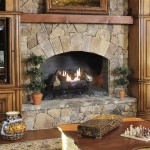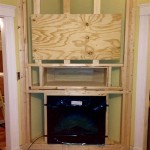Vermont Castings Winterwarm Fireplace Insert: A Comprehensive Guide
The Vermont Castings Winterwarm fireplace insert offers a blend of classic aesthetics and modern heating technology. This appliance is designed to be installed within an existing masonry fireplace, transforming an inefficient open hearth into a more effective and controllable heat source. This article will provide a detailed overview of the Winterwarm fireplace insert, focusing on crucial aspects related to its operation, maintenance, and overall performance, drawing heavily on information found within the Vermont Castings Winterwarm Fireplace Insert Manual.
The manual serves as the primary resource for understanding the intricacies of the Winterwarm insert. It provides essential safety guidelines, installation instructions, operating procedures, and troubleshooting tips. Adhering to the information contained within the manual is paramount for ensuring the safe and efficient operation of the appliance, as well as maintaining its longevity. Ignoring the manufacturer's recommendations can lead to potential hazards, voiding warranties, and compromising the insert's performance.
Understanding the Winterwarm’s Basic Operation
The Winterwarm fireplace insert operates by burning wood within a sealed firebox. This controlled combustion process allows for more complete burning of the fuel, resulting in greater heat output and reduced emissions compared to an open fireplace. The insert draws combustion air into the firebox, where it mixes with the wood fuel. The burning wood releases heat, which is then transferred to the surrounding air and radiated into the room. The exhaust gases are vented through the existing chimney, ensuring proper removal of smoke and other byproducts of combustion.
The insert's efficiency is directly linked to the quality of the fuel used. Seasoned hardwood is the recommended fuel source, as it contains less moisture and burns more cleanly and efficiently. Green or damp wood will result in reduced heat output, increased smoke production, and the buildup of creosote within the chimney system. Creosote is a highly flammable substance that can pose a significant fire hazard if allowed to accumulate.
Before initiating a fire, it's essential to ensure that all safety features are functioning correctly, including door seals and air controls. A properly sealed door prevents the escape of smoke and carbon monoxide into the living space. The air controls regulate the amount of air entering the firebox, allowing the user to adjust the burn rate and heat output. Familiarizing oneself with the location and operation of these controls is crucial for achieving optimal performance and maintaining a safe operating environment.
When starting a fire, use small pieces of kindling to establish a strong base. Gradually add larger pieces of wood as the fire gains momentum. Avoid overloading the firebox, as this can restrict airflow and lead to incomplete combustion. Monitor the fire regularly and adjust the air controls as needed to maintain the desired heat output. Allow the fire to burn down to embers before adding more wood, ensuring that the fuel is completely consumed before replenishing the supply.
Ash removal is a critical aspect of maintaining the Winterwarm insert. Excessive ash buildup can impede airflow and reduce the efficiency of the burn. The manual provides specific guidelines for ash removal, including the recommended frequency and disposal methods. Always allow the ashes to cool completely before removing them, and dispose of them in a metal container with a tight-fitting lid. Never dispose of ashes in a combustible container or leave them unattended, as they can remain hot for several days and pose a fire risk.
Key Maintenance Procedures for Longevity
Regular maintenance is essential for ensuring the Winterwarm fireplace insert operates safely and efficiently for years to come. The Vermont Castings Winterwarm Fireplace Insert Manual outlines a comprehensive maintenance schedule that includes tasks such as cleaning the firebox, inspecting the door seals, and checking the chimney system. Adhering to this schedule will help prevent problems and extend the life of the appliance.
Cleaning the firebox involves removing accumulated ash and soot from the interior surfaces. This can be accomplished using a brush and a vacuum cleaner equipped with a HEPA filter. Regularly cleaning the firebox will improve airflow and combustion efficiency. The frequency of cleaning will depend on the frequency of use and the type of fuel burned.
Inspecting the door seals is crucial for preventing air leaks, which can compromise the insert's efficiency and safety. The door seals should be inspected for any signs of damage or wear, such as cracks or gaps. If the seals are damaged, they should be replaced immediately. The manual provides instructions for replacing the door seals and recommends using only genuine Vermont Castings replacement parts.
The chimney system should be inspected and cleaned annually by a qualified chimney sweep. This inspection will identify any potential problems, such as creosote buildup, blockages, or structural damage. Creosote buildup is a significant fire hazard and should be removed promptly. Blockages can restrict airflow and lead to the buildup of carbon monoxide, a deadly gas. Structural damage can compromise the integrity of the chimney and pose a safety risk.
In addition to these routine maintenance tasks, it is also important to periodically inspect the insert for any signs of rust or corrosion. Rust can weaken the metal components of the insert and reduce its lifespan. If rust is detected, it should be treated promptly to prevent further damage. The manual provides recommendations for treating rust and preventing corrosion.
Proper storage of firewood is also an important aspect of maintenance. Firewood should be stored in a dry, well-ventilated location to prevent moisture buildup. Wet or damp firewood will burn inefficiently and produce more smoke and creosote. The manual provides recommendations for storing firewood properly.
Addressing Common Issues and Troubleshooting
Even with proper operation and maintenance, occasional issues may arise with the Winterwarm fireplace insert. The Vermont Castings Winterwarm Fireplace Insert Manual provides a troubleshooting guide that outlines common problems and their potential solutions. Consulting this guide can help identify and resolve minor issues without the need for professional assistance.
One common issue is difficulty starting a fire. This can be caused by a variety of factors, such as damp firewood, insufficient kindling, or restricted airflow. Ensure that the firewood is properly seasoned and dry and use an ample amount of kindling to establish a strong base. Check the air controls to ensure that they are open and allowing sufficient airflow into the firebox. In some cases, a clogged chimney can also restrict airflow and make it difficult to start a fire.
Another common issue is excessive smoke production. This can be caused by burning green or damp wood, restricting airflow, or a clogged chimney. Ensure that the firewood is properly seasoned and dry and avoid restricting airflow by overloading the firebox or closing the air controls too much. Have the chimney inspected and cleaned if you suspect a blockage.
If the insert is producing insufficient heat, it may be due to burning the wrong type of wood, restricting airflow, or a malfunctioning thermostat. Hardwoods, such as oak and maple, produce more heat than softwoods, such as pine. Ensure that you are using hardwoods and allowing sufficient airflow into the firebox. If the thermostat is malfunctioning, it may need to be replaced.
In some cases, the insert may produce unusual odors. This can be caused by burning certain types of wood, such as treated lumber or painted wood. Avoid burning these materials, as they can release harmful chemicals into the air. Unusual odors can also be caused by a buildup of creosote in the chimney. Have the chimney inspected and cleaned if you suspect a creosote buildup.
If you encounter any issues that you are unable to resolve using the troubleshooting guide, it is recommended to contact a qualified service technician. Attempting to repair the insert yourself without proper training can be dangerous and may void the warranty. A qualified technician will have the knowledge and expertise to diagnose and repair the problem safely and effectively.
The Vermont Castings Winterwarm fireplace insert is a sophisticated heating appliance that requires careful operation and maintenance. By following the guidelines outlined in the Vermont Castings Winterwarm Fireplace Insert Manual, homeowners can ensure the safe and efficient performance of their insert for years to come. The manual provides essential information on all aspects of the appliance, from installation and operation to maintenance and troubleshooting. Consulting the manual regularly is crucial for maximizing its benefits and avoiding potential problems. Remember, the information contained within the manual is paramount for ensuring the safe and efficient operation of the appliance and maintaining its longevity.
Vermont Castings 1988 Winter Warm 1280 User Guide Owners Manual For Wood Stoves

Vermont Castings Winterwarm Parts Wood Or Gas Stoves

Vermont Castings Winter Warm 2100 Installation And Operating Manual Manualslib

Vermont Castings Uvl18rp Installation And Operation Instructions Manual Manualslib

Vermont Castings Winterwarm Parts Wood Or Gas Stoves

Vermont Castings Winterwarm Fireplace Insert Glass High Temp Ceramic

Vermont Castings Lher20 Installation Instructions Homeowner S Manual Manualslib

Vermont Castings Bhdr36 Rn Installation Instructions Homeowner S Manual Manualslib
Vermont Castings Fireplace Insert Model 0044 Hearth Com Forums Home
Winterwarm Wood Fireplace Inserts
Related Posts








